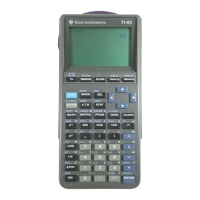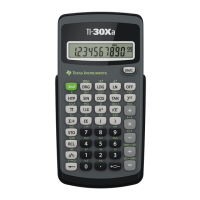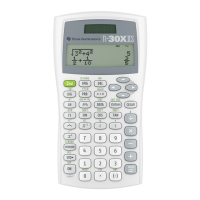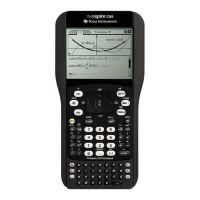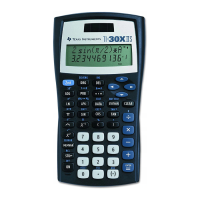5,870,319 Device and method for collecting data from graphed images
[developed for, but not necessarily limited in application to, TI graphing calculators]
Inventor(s): Thornton; Glen Allen; Ferrio; Linda Jean; Stone; David S.; Howard; Veronica L.
Issued/Filed Dates: February 9, 1999 / January 4, 1996
A computing device for capturing designated data from one or more graphic applications comprising
a screen area for viewing one or more graphic functions wherein each function is manipulated with
a plurality of shortcut keys or a cursor pad communicably linked to the screen area. A first
applications with a screen interface for the user is provided within the device having graphing
capabilities for manipulating the graphs on the screen area. A cursor, cursor pad and shortcut keys
are used to trace data along the graph and capture the points to a stack area where they are stored
for future use by a second application. The second application gives the user the ability to further
study and analyze the data. Alternatively, shortcut keys can be used to automate the transfer from
the first application to the second application.
(Credit to John Gilbertson for the recent patents)
[1.11] "Low Battery" indication voltages
The TI89/92+ gives a low-battery voltage indication in the display status line in the lower right corner of
the display. There are two levels of low-battery indication. The first level at the highest battery voltage
is displayed as "BATT". The second level at a lower voltage is displayed as "BATT" in inverse video
(white characters on a black background). This table shows the battery voltages for a HW1 TI-89 and a
HW2 TI-92+.
4.11V
1.03 V/cell
69% of 6V
3.85V
0.96 V/cell
64% of 6V
Second "BATT" indication
4.35 V
1.09 V/cell
73% of 6V
4.13V
1.03 V/cell
69% of 6V
First "BATT" indication
TI-92+ HW2TI-89 HW1
The percentages shown in the table indicate the percentage of the 'fresh battery' voltage, assuming
that each of the four cells is initially at 1.5V. This information may be useful if you are considering
powering your calculator with rechargeable NiCd batteries or some other type of rechargeable battery.
[1.12] Processor clock speed and battery voltage
The TI89/92+ use an RC (resistor-capacitor) network to set the speed of the processor clock. This
means that the processor clock frequency is not set as precisely as it would be if a crystal was used.
Some people have claimed that this results in clock frequency variations as the batteries discharge
during use.
I tested the variation in clock frequency as a function of battery supply voltage by timing a short test
program at various voltages from 6V down to the second low "BATT" indication. I found much less than
1% variation in clock speed for both a HW1 TI-89 and a HW2 TI-92+.
GraphLink transfers, particularly AMS upgrades, are know to fail at low battery voltages. One theory
has been that these failures are caused by clock speed variations that result in synchronization failure.
1 - 16

